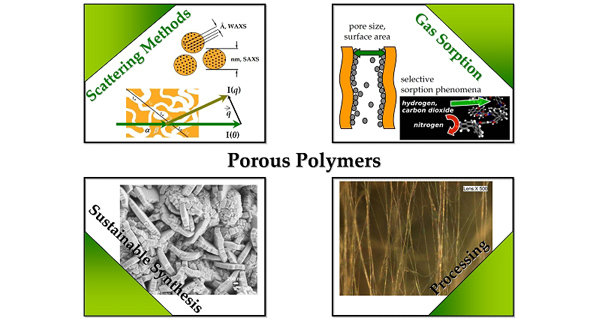
Porous Polymers: Sustainable Synthesis and Advanced Characterization
The research group on Porous Polymers has terminated it's activity at the MPI of Colloids and Interfaces. The work is continued at the Hochschule Zittau/Görlitz (University of Applied Sciences).
Porous Polymers or: How to perforate plastics with nanometer-sized holes and how to find them are the key topics of the research group.
The field of meso- and microporous polymers has been significantly expanded during the last years. A broad variety of new porous polymers has been synthesized and has also found application. But still there are a variety of problems demanding for answers. So far, most porous polymers target application in areas related to sustainable and green chemistry. Furthermore, application in environmental or energy related tasks are targeted. Despite these high goals, the synthetic pathways towards suitable polymer systems are in most cases still based on the classic "petrochemical" picture, i.e. the use of organic solvents and monomers derived from fossil sources. We believe that a broad variety of fascinating new synthetic pathways (including ionothermal, hydrothermal and enzymatic synthesis) are available and await exploration.
Secondly, although a lot of progress has been achieved in the synthesis of meso- and microporous polymers, the characterization of their porosity is by no means trivial. Essentially, the properties that make polymers so attractive (softness, ductility, flexibility, etc.) are those that hamper their characterization. Classical methods like like N2 sorption at 77K can be employed, but care has to be taken when interpreting the results. Effects like swelling, structural rearrangements or non-accessibility have to be regarded. Consequently, other methods have to be employed to observe a more complete picture of the porosity. Our research focuses on the use of gas sorption employing various gases (e.g. argon, carbon dioxide, nitrogen). Additionally, scattering methods and thermoporometry are used in order to analyze the porosity under conditions, which are comparable to those of realistic applications.
Finally, we screen the synthesized porous polymers for potential applications (e.g. sorption, catalysis, etc.)